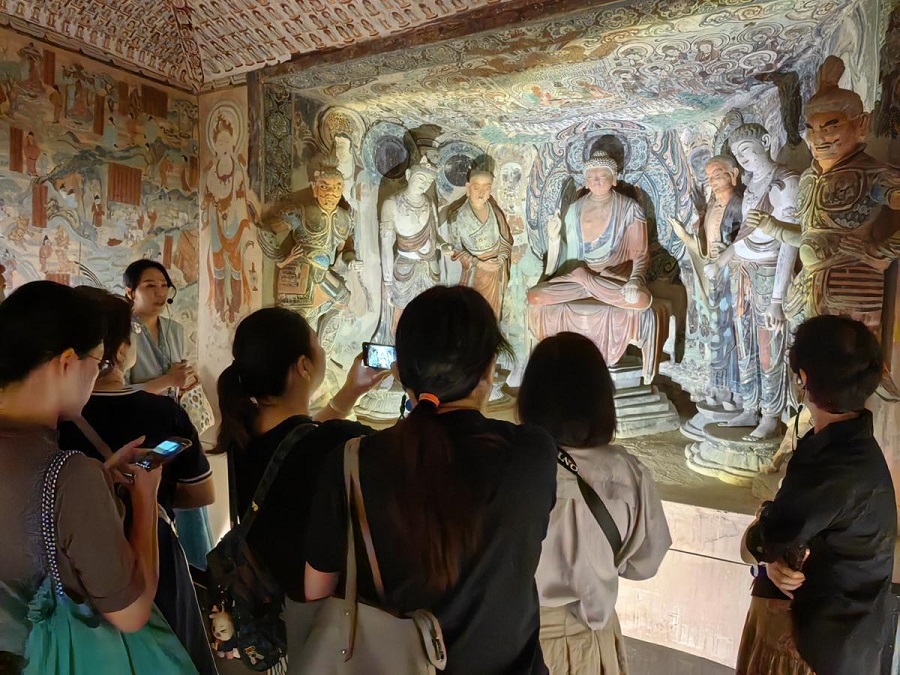Exhibit brings 'Pearl of Silk Road' to Shanghai
A highly anticipated exhibition for the ongoing Shanghai Tourism Festival, The Great Art of Dunhuang, is open from Sept 20 to Dec 20 at the China Art Museum, Shanghai.
The exhibition, arguably the most comprehensive and diversified exhibition of Dunhuang art in Shanghai, features 168 pieces or sets of cultural relics recognized as the national treasure of China. On exhibition are some of the most representative and rare artifacts from the collection of Dunhuang Academy in Gansu province, which are on their first public showcase in Shanghai.
The ancient city of Dunhuang is located in an oasis in the Gobi desert in northwestern China's Gansu province. It was an important trading center along the ancient Silk Road. From the 4th century to the 14th century, it was also an important center for Buddhism, where hundreds of caves were dug with Buddha statues and frescoes made in them. In 1987, these grottoes, known as Mogao Caves, were named a UNESCO World Heritage Site.
One of the most important exhibits is Shengli Stele, a stone with an inscription that recorded the beginning of the construction of the grottoes.
Six of the most representative caves, Cave Nos 2, 17, 45, 158, 285, and 320, have their life-size reproductions on exhibition in Shanghai, bringing visitors an immersive experience of the Mogao Caves.
Duan Wenjie, former director of the Dunhuang Academy, used to call Cave No 285 "the pantheon of diverse cultures" because the frescoes feature Buddhist deities, along with immortals in ancient Chinese folklore, gods from Hinduism and so on. Writing on the right wall showed that the cave was built in 538 and 539, which makes it the earliest one among the Mogao Caves to have its birth year specified.
Cave No 17, known as the Cave of Scriptures, was discovered by Wang Yuanlu, a Taoism monk, in 1900, when more than 50,000 artifacts were excavated, including Buddhist scriptures, social life documents, paintings, embroidery, and so on. Thanks to digital technology, the exhibition managed to bring together some of the important documents and scriptures from Cave No 17, which are now in the collections of museums all over the world.
An important part of the exhibition is dedicated to the continual efforts in the protection of the Mogao Caves by several generations of Chinese archaeologists and artists, as well as international collaboration in this field.

